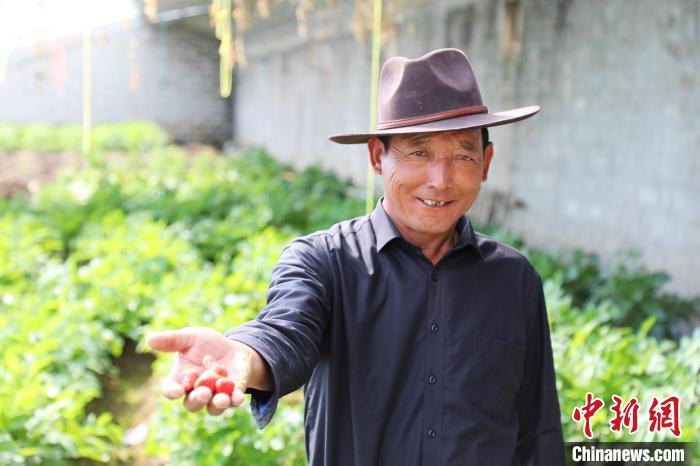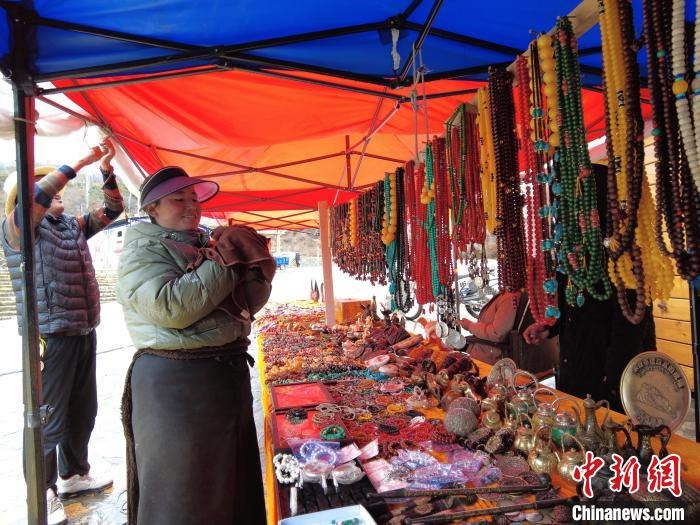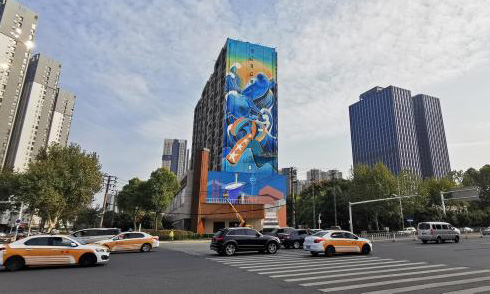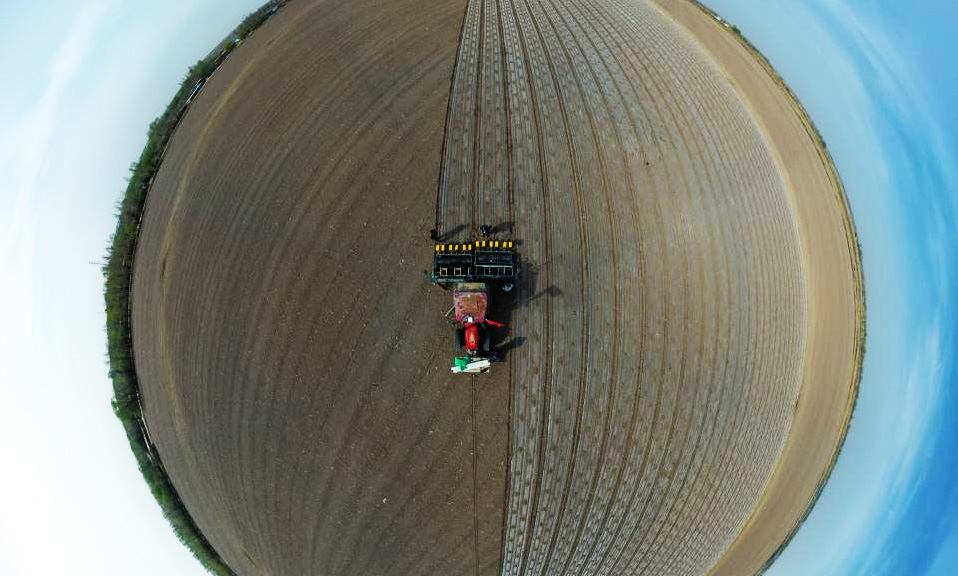Improved roads in rural areas in China’s Tibet benefit local people
Southwest China's Tibet Autonomous Region has improved rural roads over the past few years, which has enhanced the livelihoods of local people.

Pasang Tsering, a villager from Kyerpa township, Nedong district, Shannan city of southwest China's Tibet Autonomous Region, shows his strawberries. (Photo courtesy of the department of transport of Tibet)
From 2016 to 2021, the region poured 94.1 billion yuan (about $14.47 billion) into 3,123 rural road projects, and has built or renovated 38,200 kilometers of roads in rural areas. By the end of 2021, the total length of rural roads in Tibet had exceeded 90,000 kilometers, with another 280 towns, townships and 2,974 administrative villages linked by paved roads.
Duruo village, Kyerpa township, Nedong district, Shannan city, has seen its agricultural industrial parks connected by asphalt roads, and its environment improved since 2017. This has attracted large amounts of investment, and has expanded sales channels for villagers’ agricultural products, according to Liu Yuze, deputy head of the township.
Liu added that at present, 1,277 households from the six administrative villages of the township plant about six kinds of fruits and vegetables in 79 greenhouses, which give each household an extra 20,000 to 30,000 yuan per year, equivalent to around one third of the average household income.
“I sell about 2,000 yuan worth of strawberries every week these days,” said Pasang Tsering, a resident of Duruo. He added that the improved transportation network has led to an increase in the number of tourists, and residents of nearby Shannan, coming to pick strawberries in the village, greatly boosting sale.

Photo shows Nyima Ratso selling products at her roadside booth in Mainling county, Nyingchi city, southwest China's Tibet Autonomous Region. (Photo courtesy of the department of transport of Tibet)
Similarly, by selling local specialties along the roads in rural areas, 36 households from Gega village, Mainling county, Nyingchi city bid farewell to poverty, according to Nyima Ratso, a villager of Gega, who sells local products, such as matsutake mushrooms and Tibetan handicrafts, at her roadside booth.
Another story has unfolded in Tashi Choden, Changzhu town of Nedong, a community rich in culture. Li Yuwei, deputy head of Changzhu town has stated that paved roads, laid in 2019, have brought a growing number of visitors to the community to enjoy local customs and culture, such as Tibetan opera, and has boosted local homestay and catering businesses.
Photos
 World Book Day: Let's read together
World Book Day: Let's read together Rare silver pheasants flock together in greater numbers to forage at Yishan nature reserve in east China's Jiangxi
Rare silver pheasants flock together in greater numbers to forage at Yishan nature reserve in east China's Jiangxi Young artist takes up brush to create lifelike paintings expressing mankind and nature’s harmonious co-existence
Young artist takes up brush to create lifelike paintings expressing mankind and nature’s harmonious co-existence Cutton farming in full swing in China's Xinjiang
Cutton farming in full swing in China's Xinjiang
Related Stories
- Villagers in Tibet’s Nyingchi become prosperous through rural tourism
- Tibet embraces caterpillar fungus harvest
- Ecological resources become ‘immovable property’ guaranteeing people’s happy life in Tibet
- Children's literature in Tibetan language turns new page
- Plateau roads pave way for Tibet's rural revitalization
- Tibet prioritizes ecological protection in development
- Rural roads in Tibet exceed 90,000 km
- Tibet makes progress in prehistoric archaeology research
- Over 1.1 mln folios of ancient texts archived at Tibet's Potala Palace
- Residents pick tea leaves in Medog County, China's Tibet
Copyright © 2022 People's Daily Online. All Rights Reserved.






